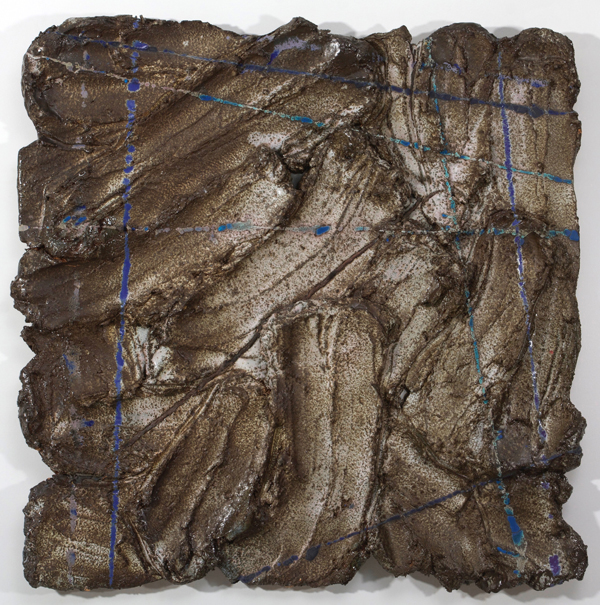June 4th to July 16th
Opening June 4th 4pm to 7pm
Followed by a potluck
Upstairs: Paul Chaleff
Downstairs: Behind the Great Green Glass
Moira Kelly, Dana Gentile, Karen Tepaz, Peter Acheson, Bruce Gluck, Sarah Heinemann
The Re Institute welcomes a truly sublime artist and person, Paul Chaleff. The common perception is that to be an artist is to be an ogre, or at least not very nice. Sometimes the man and his art are intelligent, thoughtful, and caring. We artists are not our work but we do produce what is within use. In the case of Paul it is monumental and beautiful. His work will be displayed on the top floor of the gallery. It will include five large sculptures and a number of monumental tablets.
On the first floor The Re Institute continues to explore the links between artists, this time through the process of painting of a Sol LeWitt installation at Bard College, Behind the Great Green Glass.
|
|
Force of Surface Tension
2014
42 x 42 x 3
Fired Clay, Glaze, Copper, Lead, Tin on plywood backing |
|
|
Paul Chaleff has been working with clay for almost fifty years. After his return from studying in Japan in the mid 1970’s, he became well-known as a pioneer of wood-firing in America. This work has been collected by many of the most important museums in the US. Starting in 1989 and continuing for more than ten years, he collaborated with the British sculptor Sir Anthony Caro on a number of clay projects. Since that time, he has concentrated on large-scale clay sculpture.
Chaleff’s sculpture has a close affinity with minimalist art. It exudes an austere and quietly dignified reductionist power that expresses the circular and continuous nature of contrast and restraint rather than extreme decoration or populist expression.
The sculpture in this exhibition represents some of his best large work. In “Confluence” we see two opposing forms smashing/fusing together. Although they look solid, the movement of the clay tells us that they have turned into liquid. This forceful joining reminds us of rivers merging, the strength of igneous intrusions or the wave-like movement of sedimentary rock. “Echo” is a piece that Chaleff constructed in the Noguchi Museum in 2013. According to the artist, he had been inspired by “The Roar” after seeing the stone sculpture in Noguchi’s Whitney retrospective in 1968. He created “Echo” in the same space in which “The Roar” presently resides; the title, “Echo,” refers to Chaleff resonating with the strength of Noguchi’s powerful work. “Lion’s Share” and “One, Two, 1-2-3” talk about conflict and resolution, natural versus man-made, and many of the other contrasts we must find methods of understanding both personally and as a people.
wo years ago we saw four large clay tablets made by this artist at The Re Institute. In this exhibition, we see more of Chaleff’s large clay tablets, more colorful and iconic than his past works. Whereas his sculpture can be said to be restrained, the tablets speak out with pattern, color, movement, and glaze in much more playfully organized and graphic compositions on large flat planes of clay. Many of the titles seem integral to his ideas and thereby give us a window into his thinking. |
|
|
|
Behind the Great Green Glass “The use of instructions was a major strategy used by Conceptual artists. Among its principal originators was Sol LeWitt, whose instructions for several series of geometric shapes or detailed line drawings, made directly on the wall surface, sometimes took teams of people days or weeks to execute.” ─MoMA In October 2015 a group of artists were brought together to follow the instructions of Sol LeWitt and execute Wall Drawing #475. LeWitt's work is usually seen in the context of the end result: a painting or drawing on the wall. The process of making the work is dependent on a crew of artists who execute LeWitt’s written instructions. Together, these artists develop the experience of real time process and collaboration. There is much time for discussion and the artists inevitably share details of their own creative work. During the 18 day installation, with the exchange of stories and ideas, relationships developed between the artists. At the end of the installation they were inspired to continue the dialogue. Each wrote a set of instructions. These were chosen, at random, out of a hat, each member picking his/her instructions. This exhibition is the result of the following instructions: Moira Kelly Boxes. Oct. 22nd, 2015. Dana Gentile Build it Draw it Do it. Karen Tepaz The series of events that led to this. Peter Acheson Eye of the Beholder. Bruce Gluck Take one week of NY Posts or Daily News and make a painting of it or based on it. Sarah Heinemann Post and Beam. Statement by the Artists: Peter Acheson The question in contemporary psychology is not " what is the subject?", but rather, "where is it?" I am not interested in self-expression. If trees and rocks have soul, then why not colored dirt (minerals) on canvas? And vice versa. |
|
|
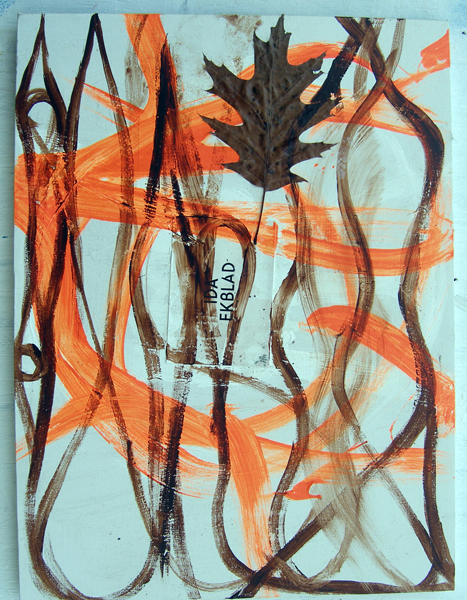 |
Peter Acheson Ida Eckblad |
|
|
Somewhat awkward within social situations and most comfortable observing nature, Dana Gentile makes work that combines found household objects and natural components repurposed and detached from their usual function. Gentile’s work expands on her interests in history, nature, our relationships to one another and our control or lack of control over the natural world. |
||
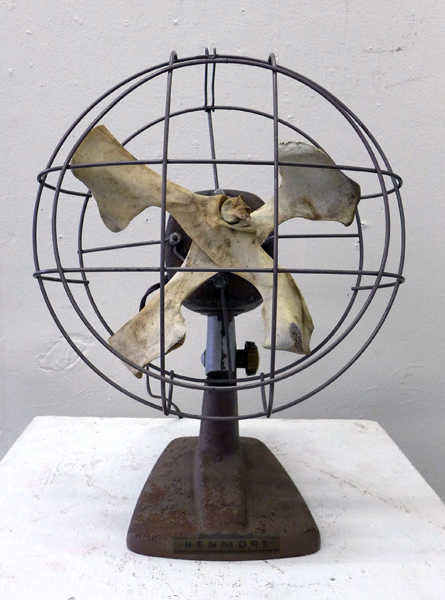 |
Dana Gentile Bone Fan |
|
|
Sarah Heinemann I use painting, creative process, and observation to draw connections between nature, the subjective experience of landscape, and space. Leaning into the phenomenon that material, light and color transforms an imaginary world into one that feels real and back again. M |
||
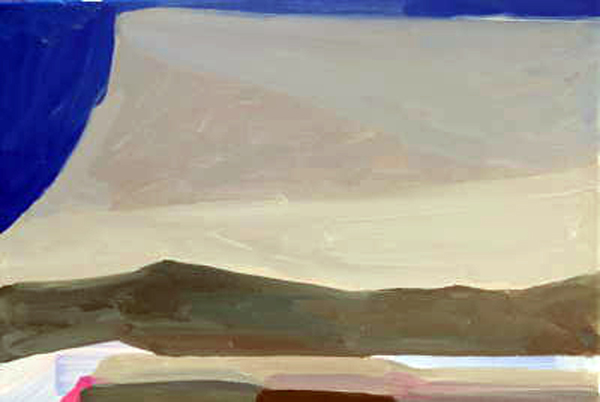 |
Sarah Heinemann |
|
|
Moira Kelly I love stripes and color combinations. A kind of tailoring. It’s all in the cut and the materials. Plaster, tempera and oil paint. A rich text. |
|
|
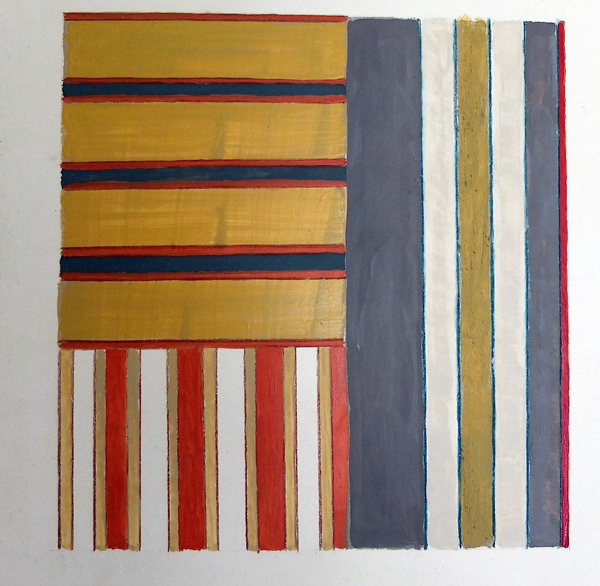 |
Moira Kelly | |
|
Karen embraces the idea of the impermanence to materialize an image. By playing with the relationship between image and object, she collages a series of marks and events that led up to a photograph that blurs its perception of surface and space. |
||
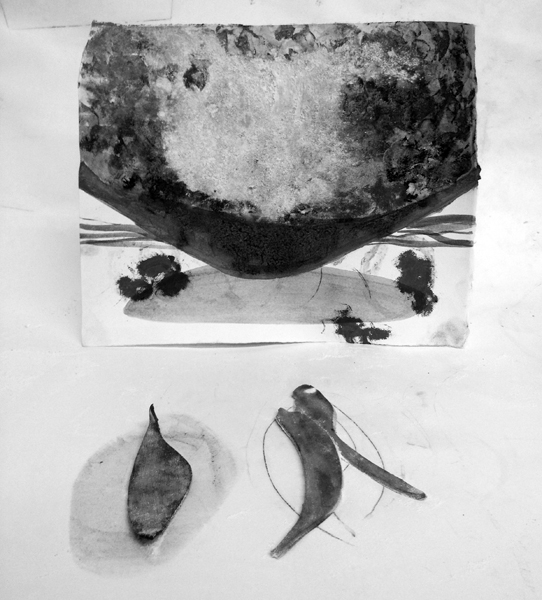 |
Karen Tepaz | |
|
Bruce Gluck Be who you is instead of who you ain't, because if you is who you ain't you ain't who you is. |
||
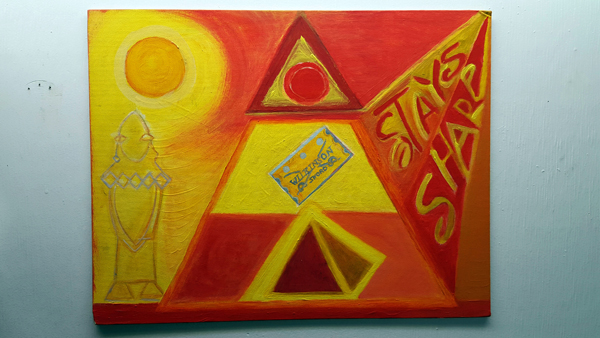 |
Bruce Gluck Pyramid Power |
